Last-Minute NYC Holiday Gift Guide 🎁
We’ve created a holiday gift guide with presents for the intrepid New Yorker that should arrive just in time—


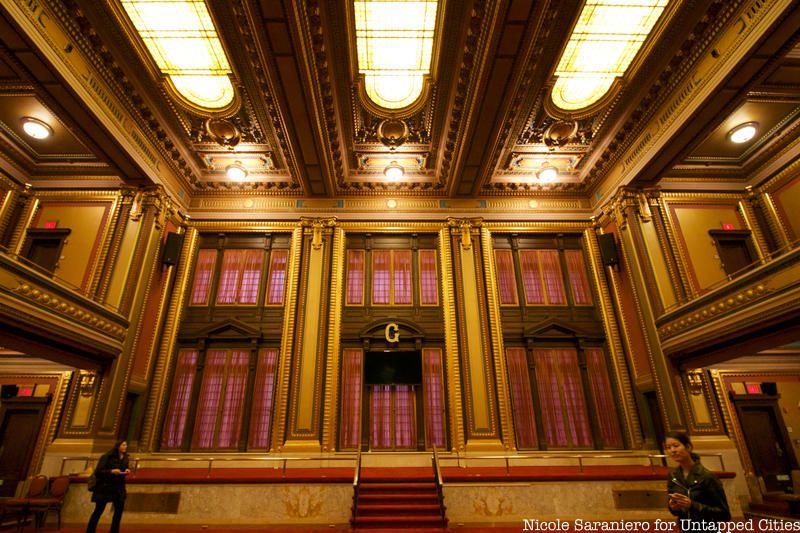
Freemasonry is a historic fraternal order that has been shrouded in mystery for centuries, but it turns out, the masons are pretty open to letting you in on a few of their secrets. Untapped Cities Insiders recently got to tour the Masonic Hall and Grand Lodge of Free and Accepted Masons in Chelsea where they learned the history of this organization and were guided through the many intricately decorated lodge rooms by brothers in the order who were more than willing to shed light on the not-so-secret-society.
There are many places around New York City where masonic influence can be seen, but the Masonic Hall on 23rd street serves as the headquarters for the entire state of New York. This two building complex made up of commercial and masonic spaces serves is home to over sixty masonic lodges, or groups who meet there regularly. The Hall was built in 1910 by architect Harry P. Knowles, who was a Master Mason. The meeting rooms underwent a major restoration in the mid-1980s through the 1990s by interior designer Felix Chavez. Though not all of the secrets of the order were revealed to us on our tour, but we did learn many interesting facts and cleared up a few misconceptions. Here are the top 10 secrets of New York City’s Masonic Hall:
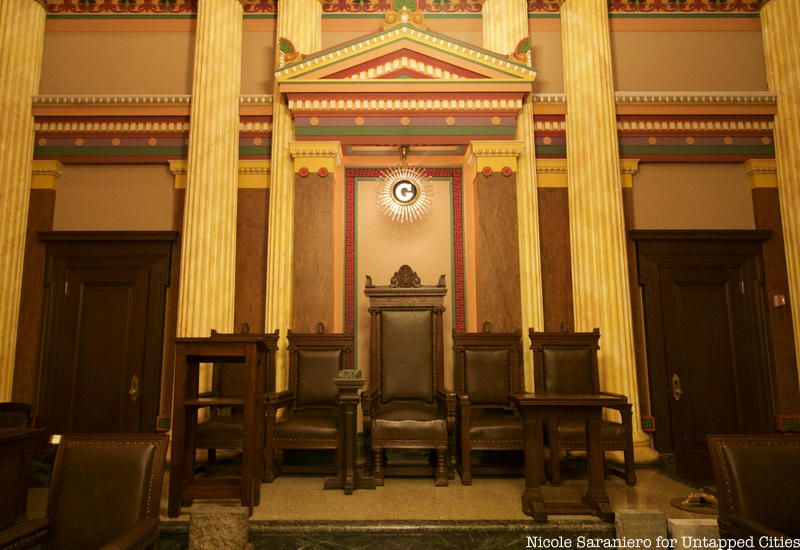
Though the exact point of origin for Freemasonry is unknown, it is widely believed that it started in the Middle Ages in Europe. According to the Masonic Association of North America, the oldest document that makes reference to Masons is the Regius Poem which was printed around 1390. The first Grand Lodge and official records of organized freemasonry started in London in 1717 and the first lodges in America date back to the 1730s. The Grand Lodge of New York was established in 1782. Over the centuries the order of freemasons has spread globally and now counts an estimated 5 million worldwide members with over 2 million freemasons in the United States alone.
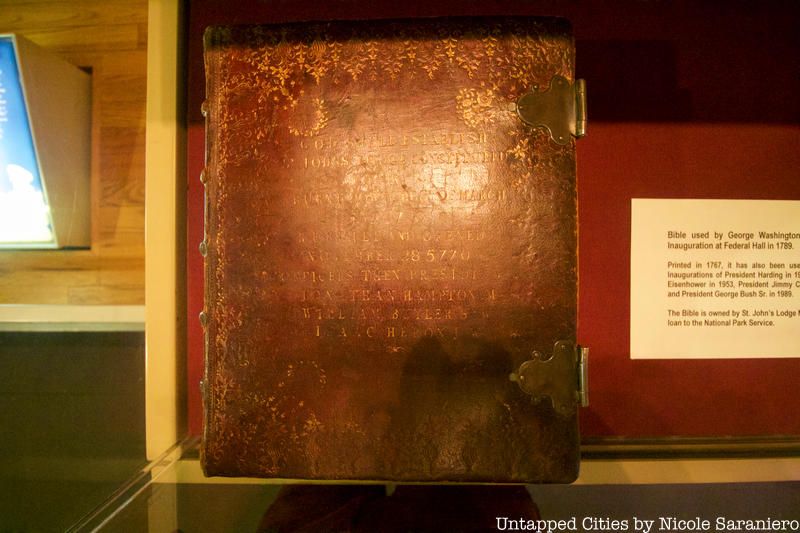
Among the Masonic Hall’s collection of historic items is the bible used during President George Washington’s inauguration at Federal Hall. Washington was sworn in by Chancellor Robert R. Livingston, the Grand Master of Masons in the State of New York at the time in 1789. The story goes, that when it was discovered there was no Bible for Washington to swear on, the Grand Marshal of the parade and also Grand Master of St. John’s Lodge No. 1, Jacob Morton, offered to run and grab the lodge’s altar bible from the lodge which was then headquartered at the Old Coffee House on the corner of Water and Wall Streets. The Altar Bible of St. John’s Lodge No. 1 was also used at the inauguration of presidents Warren G. Harding in 1921, Dwight D. Eisenhower in 1953, Jimmy Carter in 1977, and George H. W. Bush in 2001, and has made appearances at other historic events such as the 1964 World’s Fair, the introduction of Croton water into New York City in 1840, and the dedication of the Washington monument in 1885. The Bible is a King James version printed in London in 1767 and contains additional historical, astronomical and legal data from the period as well as artistic steel engravings that portray Biblical narratives.
St. John’s Lodge No. 1, which was warranted in 1757, is the oldest operating lodge under the jurisdiction of the Grand Lodge of New York Free and Accepted Masons and one of the oldest in the country. When the Bible is not being used by the lodge – which does still actively use it – or on tour, it is on display in Federal Hall.
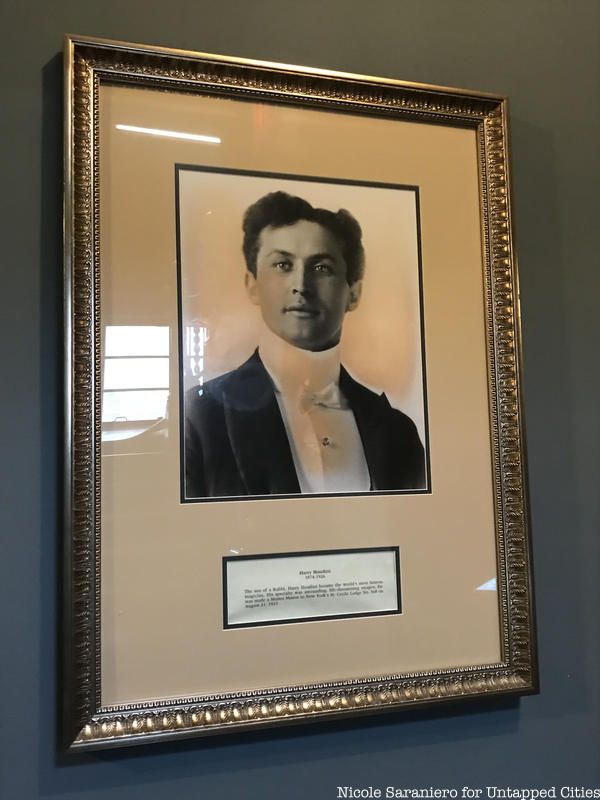
In order to be a mason, you have to ask a mason. Then, the only parameters for acceptance are that you believe in a god, are eighteen or older and are a man. It doesn’t matter what religion you believe in, so long as you believe in some form of a higher power. The masons accept anyone with these qualifications no matter their race or sexual orientation. Once accepted, there is no talk of religion or politics allowed at lodge meetings. Women can still not be freemasons, but they can join the Order of the Eastern Star, a masonic adjacent society created for men and women in the late 1800s by Master Mason Dr. Rob Morris.
The walls of the Masonic Hall are lined with photographs of famous men, especially New Yorkers, who were Masons such as Harry Houdini, John Jacob Astor, and New York City Mayor Fiorello Laguardia. It is rumored that up to twenty-five presidents of the United States have been Masons of one rank or another, but it is verified that at least fourteen were.

The Grand Lodge is the largest space in the Masonic Hall and has seating for up to 1,200 people. The most exquisite part of the room may be it’s ceiling. The ceiling features three giant Tiffany-style windows and is covered in 54,000 pieces of Dutch metal gold leaf. During the 1986 restoration of the lodge it took fifty artisans and gallons of paint to get the room into this dazzling state. The windows had to be removed plate by plate, reinforce and then put back. The Grand Lodge is so spectacular that it is said to have inspired design elements inside the ill-fated yet luxurious Titanic cruise ship.
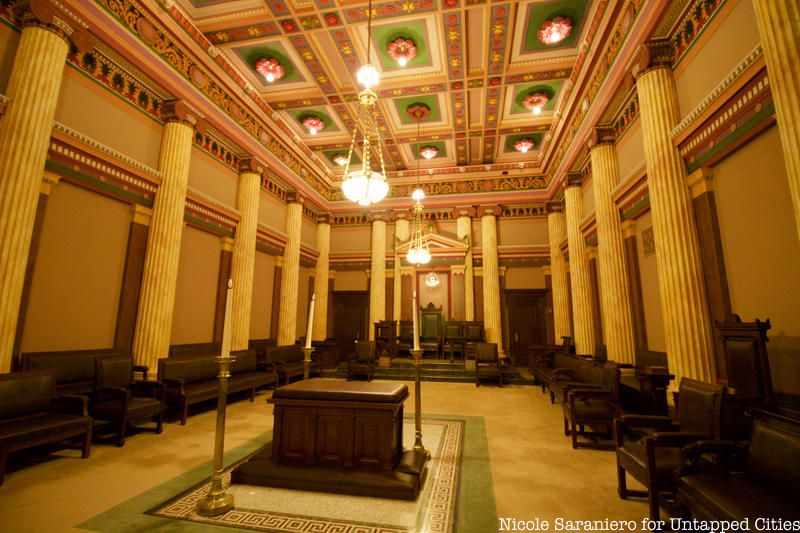
The Masonic Hall is made up of over a dozen meeting rooms and each has the same layout. There is an altar in the center of the room surrounded by three candles. The candles represent the two wardens and the Master of the lodge. On the east end of the room the elected Master of the lodge sits in the largest chair at the center and is flanked by two officers on either side. The rest of the members line the sides of the room on benches or chairs that match the style of whatever room they are in (the bare wooden chairs in the Colonial Room are the most uncomfortable, but the rest of the rooms have cushioned seats!).

Each room also contains an intricately painted organ and two ornate columns on the west side of the room. When every new mason is initiated he must walk through these columns. The columns represent the Temple of King Solomon, a location that in masonic theory was where freemasonry originated.
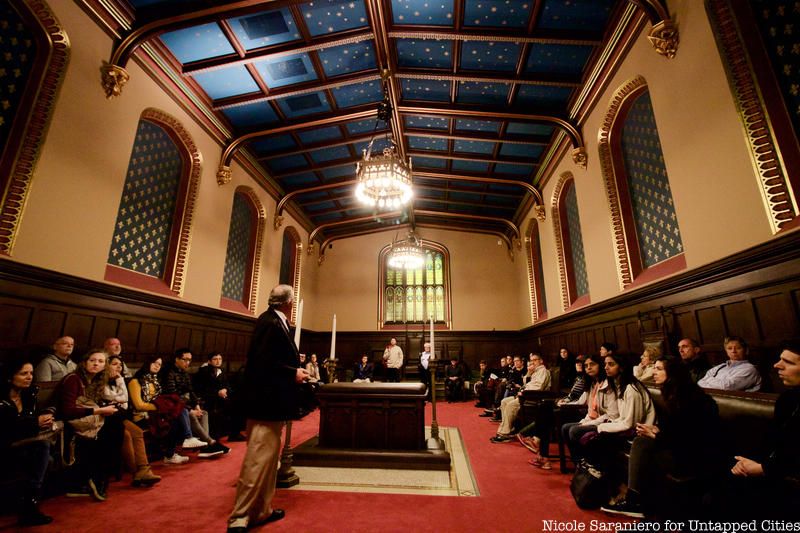
In the mid-1980s under the direction of interior designer Felix Chavez, each of the meeting rooms were restored in extraordinary fashion. Though they each have the same basic layout, the decor of every room is strikingly different. Drawing inspiration from everywhere from Egyptian tombs to the French countryside, the rooms are named after their distinctive styles: The Gothic Room, The Ionic Room, the Colonial Room, the Doric Room, the Renaissance Room, and so on. Some of the rooms were given completely new designs and some were restored with added color, but every room is full of intricate details.
A fun fact about the French Doric Room, though the frescoes on the wall are supposed to be of the French countryside, no one who has been to France can identify the locations that the paintings are supposed to represent!

Though many of the rooms appear to have marble inlays and columns, wood coffered ceilings, and gold detailing, these decorative elements are actually all made of painted plaster. This design trick is most prevalent in the Renaissance Room where the walls seem to be adorned with marble inlays, gold trim and orange marble columns. Even the windows are fake in the rooms. None of the meeting rooms contain windows that actually look outside, though the Gothic room has a marvelous stained glass window filled with masonic imagery and symbolism.


If you are looking for a place to hold your next big event, you can do it at the Masonic Hall! When they are not being used for masonic meetings, the rooms inside the Masonic Hall are rented out as event spaces. Lodges usually meet a few times a month in the evenings. There are two kinds of meetings: business and ceremonial. At ceremonial meetings new Masons are initiated and existing Masons move up in degree.
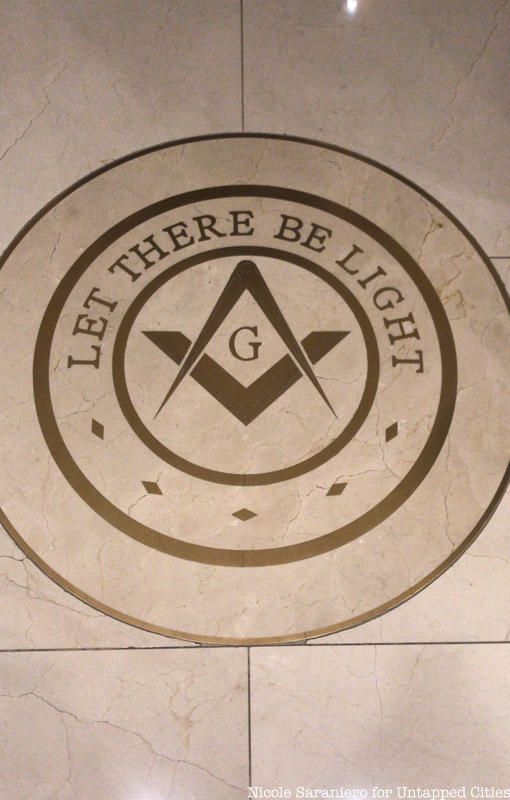
It’s no secret that the Masons love symbols. Perhaps the most recognizable is the square and compass with a “G” in the center. The “G” is for geometry and the “Great Architect of the Universe.” The square represents morality and honesty while the compass symbolizes circumscribing desire and keeping passions in bounds. The use of masonry tools in their symbolism harkens back to the organization’s origins in the Middle Ages. Traveling stone masons would use passwords and secret handshakes to identify themselves as members of guilds so they could gain access to construction sites
. Today, Masons do the same to identify themselves to each other. The literal tools the stonemasons used in their craft are now incorporated in the masonic lodges’ “speculative geometry.” Instead of crafting temples and cathedrals, today masons are crafting character and “making good men better.” You can see the imagery of stonemasonry tools all over the lodge, including these small grotesques that line the Gothic Room.
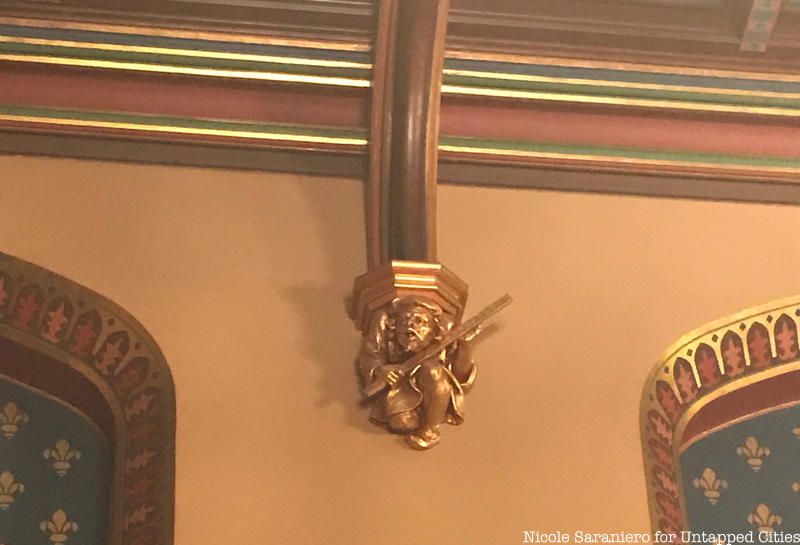
Degree names are also taken from craft guilds. To become a stonemason one would first have to become an apprentice, then a fellow of the craft and finally a master. These names are reflected in the three stages of masonry: Entered Apprentice, Fellow Craft, and Master Mason, which are further broken down into 33 degrees.

The Grand Lodge of Free and Accepted Masons of New York is involved in many charitable organizations including the Masonic Youth Camp at Camp Turk in Woodgate, New York, and maintaining the DeWint House at Tappan. Perhaps the most surprising of their charitable endeavors is the Masonic Medical Research Institute.
MMRI was founded in 1958 and is a not-for-profit institute dedicated to improving the health and quality of life for all. The current focus of the institute is Cardiovascular Disease, specifically Cardiac Arrhythmias and Sudden Death syndrome. Research into tissue and organ bioengineering with the goal of building new hearts for transplantation is being conducted at the institute.

During the restoration in the 1980s, two sterling silver chandeliers were found discarded in the basement! The chandeliers were polished, restored and hung up in the Colonial Room.
Next, check out 12 of NYC’s Historic Ballrooms, Grand Entertainment Venues of Another Era
Subscribe to our newsletter